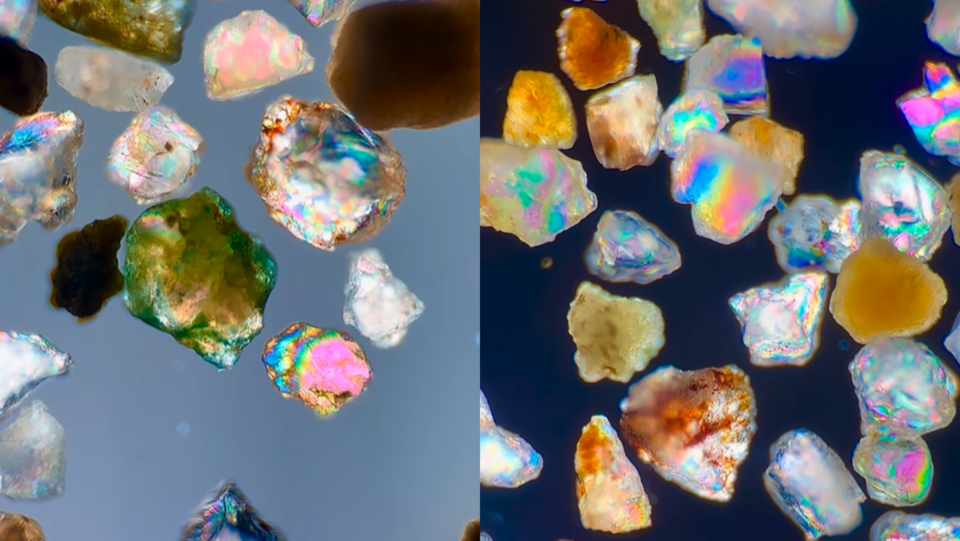Ever wonder what a beach looked like up close?
Like, really up close.
No, even closer.
Well, Chloe Savard, a Montreal microbiologist did, and she decided to take a really close look with her high-power microscope (along with filters).
She's made a couple of videos she's posted as Tardibabe with extreme close-ups, including one with sand from a Vancouver beach.
Under the mighty microscope, many of the individual grains of sand from Vancouver look like iridescent jewels, shiny under the light. Some also appear to nearly be transparent.
"Sand is a non-cohesive grainy material made of minerals in which each particle has a diameter ranging from 0.0625 to 2.0 mm," explains Savard in the video's caption. "Sand composition varies a lot depending on environmental conditions, rock sources, and biological activities."
The sand from different places can look quite different since it's made up of ground-up bits of the local environment, both geological and biological.
"The most common sand constituent is silica in the form of quartz and the second most common is calcium carbonate that comes from exoskeletons of corals, shellfish, foraminifera, and other aquatic organisms," Savard writes.
The video features sand from five other locations around the world: Okinawa (Japan), Laguna Beach (California), Little Havana (Florida), Bar Beach (Australia), and Iles de la Madeleine (Quebec). Of the other beaches, Vancouver's sand seems to look the most like Laguna Beach, about 1,800 km south of Vancouver.




